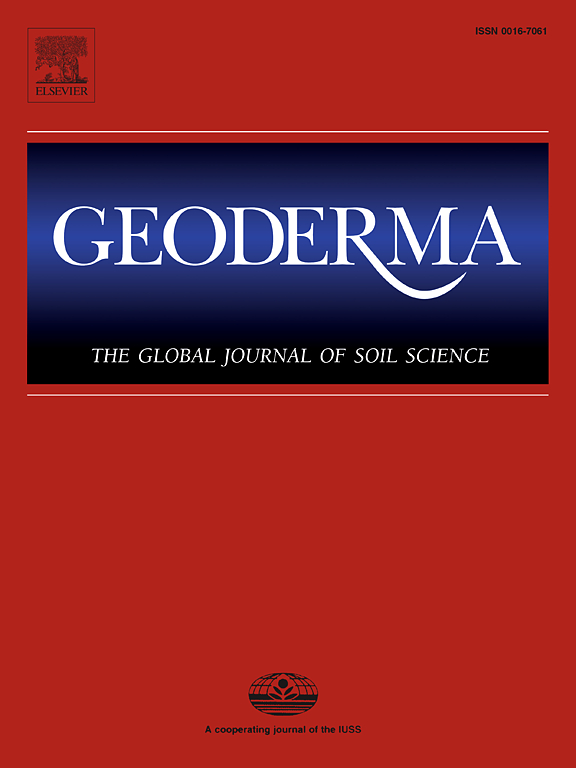Reconciling historic and contemporary sampling of soil organic carbon stocks: Does sampling approach create systematic bias?
IF 5.6
1区 农林科学
Q1 SOIL SCIENCE
引用次数: 0
Abstract
Accurate determination of soil organic carbon stocks is important to track long-term change due to land management or land use, for greenhouse gas (GHG) inventory reporting, and carbon trading associated with these changes. Typically, these stock measurements are carried out, using either horizon-based or continuous core sampling, to collect soil bulk density, organic carbon content and depth of the desired layer. Differences in methods also relate to the soil organic carbon (SOC) collection via a core or a horizon scraping. There is also growing consensus that stocks should be calculated on an equivalent soil mass basis to reduce error in measurements and account for biases related to changes in bulk density. Here we quantify SOC stocks measured using four different field sampling methods (variations of depth-based and horizon-based sampling using pits, or continuous core sampling). We then compare the results using either: i) a fixed-depth; or ii) an equivalent soil mass calculation (ESM) approach. Our results demonstrate that there was no bias associated with depth-based or horizon-based methods, where bulk density was determined in the centre of each layer, and carbon content across the full horizon, compared to a core sampling method where both bulk density and SOC content were determined continuously for the whole profile in fixed-depth increments. While there are small differences between methods when fixed depth sampling was used, these differences can be substantially reduced when using ESM. Reprocessing of SOC stock data using ESM should be carried out to reconcile any potential differences caused between sampling methods in historic and contemporary datasets.
调和历史和当代土壤有机碳储量采样:采样方法是否会产生系统偏差?
准确测定土壤有机碳储量对于跟踪由于土地管理或土地利用引起的长期变化、温室气体(GHG)清单报告以及与这些变化相关的碳交易都很重要。通常,这些储量测量是通过水平取样或连续取样进行的,以收集土壤容重、有机碳含量和所需层的深度。土壤有机碳(SOC)收集方法的差异也与地核或水平刮取有关。也有越来越多的协商一致意见认为,存量应在相当的土壤质量基础上计算,以减少测量误差,并考虑到与体积密度变化有关的偏差。在这里,我们使用四种不同的现场采样方法(基于深度和基于水平的采样方法的变化,使用坑,或连续岩心采样)来量化SOC储量。然后,我们使用以下两种方法比较结果:i)固定深度;或ii)等效土体计算(ESM)方法。我们的研究结果表明,与岩心采样方法(以固定深度增量连续测定整个剖面的体积密度和有机碳含量)相比,基于深度或基于水平的方法(在每层的中心测定体积密度,并在整个层位测定碳含量)没有偏差。虽然使用固定深度采样时,方法之间的差异很小,但使用ESM时,这些差异可以大大减少。应该使用ESM对SOC存量数据进行再处理,以调和历史和当代数据集中采样方法之间的任何潜在差异。
本文章由计算机程序翻译,如有差异,请以英文原文为准。
求助全文
约1分钟内获得全文
求助全文
来源期刊

Geoderma
农林科学-土壤科学
CiteScore
11.80
自引率
6.60%
发文量
597
审稿时长
58 days
期刊介绍:
Geoderma - the global journal of soil science - welcomes authors, readers and soil research from all parts of the world, encourages worldwide soil studies, and embraces all aspects of soil science and its associated pedagogy. The journal particularly welcomes interdisciplinary work focusing on dynamic soil processes and functions across space and time.
 求助内容:
求助内容: 应助结果提醒方式:
应助结果提醒方式:


